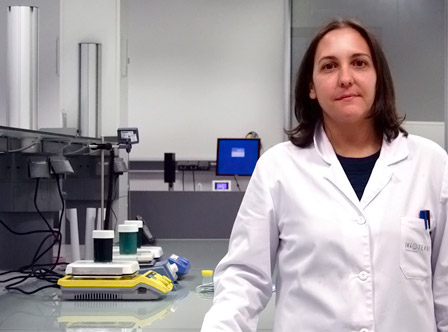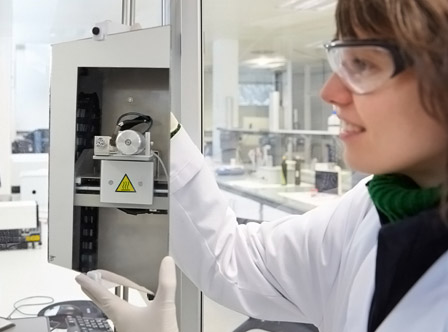THE EXPERT'S VIEW


Materials are crucial when it comes to building, modifying and creating products, which is why industry is making ever greater demands of the materials it uses for producing them. Companies are progressively calling for sustainable materials with greater features, high resistance and new functionalities. This is one of the reasons why the scientific community worldwide is attaching great interest to smart materials, given the unique characteristics of these "multifunctional" systems. This evolution in the needs that companies from different sectors, like the automotive, renewables or aeronautical sectors are demanding from materials has generated a boost in specific technologies geared towards increasing the value of materials.
It is through their surfaces that materials interact with the atmosphere and with other materials, which means they are a crucial part of materials for two very different reasons. Firstly, it is on their surfaces that phenomena like corrosion, wear and fatigue originate and which can shorten the useful life of certain components. The second reason is that surfaces determine the chemical, electronic, optical or mechanical properties of a material.
That is why the term surface engineering emerged early in the 1970s. The origins and main principles of surface engineering can be found in the traditional technologies of surface heat treatment, like hardening through tempering, nitriding or carburizing.
This discipline has therefore emerged out of the union between the traditional and the modern. It arose out of the need to solve wear phenomena using traditional heat treatment technologies; and driven by the need to generate new, multifunctional materials, it evolved.
Today, this discipline is understood as a field within materials science that includes the application of physical and chemical technologies designed to modify the surface of materials in order to provide them with new properties, improve a feature inherent in the material, or to achieve a new appearance. So surface engineering does not only include deposition or coating technologies, but also any physical or chemical modification without cladding. The generating of a uniform roughness on a surface, for example, can change the matt or shiny finish of a material or its surface energy. In short, surface engineering transforms the starting materials only by modifying their “skin”.
Industrial vision and applications
The tendency in industry is to develop surfaces specially for a specific component. So the usual practice consists of a set of one-off solutions that complicate the development of new opportunities, since the most widespread problems are associated with the scaling and prediction of the behaviour of the material.
Many high-tech industrial sectors, like the energy or building sectors, routinely use surface treatment technology. Basically, the application carried out by these technologies is geared towards solving certain wear mechanisms (abrasion, corrosion, erosion, fretting, etc.), since it is reckoned that the corrosion and wear of materials alone account for about 4% of Gross Domestic Product (GDP) in industrialised countries. Given their importance, the industrial applications of surface engineering are many and increasingly diverse. The innovation activity in the sector is ongoing, and in the future will go on seeking to provide materials with a whole range of new properties like a bactericidal capacity or self-cleaning, anti-graffiti, anti-freeze or even anti-mist properties.
The most sought-after properties or characteristics for industry by means of surface engineering cover the whole range that goes from properties of an optical type to those relating to healthcare including the strictly aesthetic ones. They include electronic properties like the conductivity of electrochromic surfaces. Some of the more developed ones are the optical properties devoted to sectors like construction (low emissivity glazing that prevents infrared radiation from escaping), the production of photovoltaic energy (transparent conducting oxides) or even decoration (aesthetic layers).
Surface engineering has also gone a long way towards developing the technology to provide materials with tribological properties. The automotive or aeronautical sectors, among others, need to use materials with surfaces that can withstand a life in hostile environments, or exposed to chemical mediums or phenomena like friction or corrosion.
Surface engineering at IK4-TEKNIKER
Faced with the challenges posed by the new multifunctional materials and the demands for durability in more hostile environments, surface engineering is one of the future commitments of IK4-TEKNIKER within its philosophy of specialisation. This line is being applied to various R&D Units in the centre (Surface Chemistry, Surface Physics, Tribology, Micro-nano technologies and Ultraprecision Processes) and brings together all the knowledge needed to establish a strategy of the centre and a future vision.
IK4-TEKNIKER has various technologies in this field: physical and chemical cladding techniques (Physical Vapor Deposition (PVD) and Sol-gel), surface chemistry transformation technologies without cladding (plasma electro-deposition) and technologies for physical surface transformation without cladding (laser, nanoimprinting lithography, UV photolithography). It also has a characterisation laboratory where it is possible to develop and validate the different surfaces as a step prior to applying them in an industrial environment. IK4-TEKNIKER’s team that specialises in Surface Engineering is working to find future opportunities for this discipline by comparing its technological capacity with real industrial needs and directly approaching companies that are expressing their short-, medium- and long-term needs. This direct relationship between the companies and IK4-TEKNIKER has enabled the centre to specify concrete development aims and to redirect its efforts towards a shorter term.
IK4-TEKNIKER, which has accumulated long experience in State as well as European projects, and in industrial or knowledge generation within the field of Surface Engineering, is now facing two main technological challenges. Firstly, to globalise the knowledge generated in the various one-off solutions so that it can facilitate the development of new opportunities, since it is capable of predicting the behaviour of a material or of simplifying its scaling. Secondly, the centre is seeking to develop multifunctional materials that may require the bringing together of various technologies.
The ultimate aim of these challenges is to address the practical needs of industry. IK4-TEKNIKER is addressing the needs expressed by the clients through various technologies by specifying which is the most suited in each case, bearing in mind industrial-scale production and the design of a protocol to validate the definitive solution.



